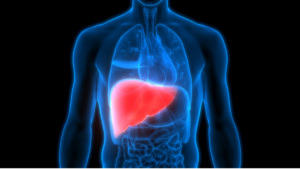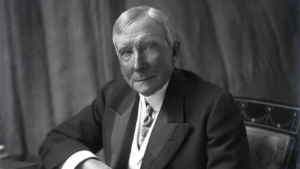World War I, also known as the First World War, stands as one of the largest and deadliest conflicts in history. Spanning from July 28, 1914, to November 11, 1918, it originated in Europe and witnessed unprecedented levels of devastation and loss of life. The war pitted the Allied Powers against the Central Powers, ultimately resulting in the defeat of the latter. World War I brought about the downfall of major imperial dynasties, including those of Germany, Russia, Austria-Hungary, and Turkey, contributing to significant societal upheaval and setting the stage for future conflicts, notably World War II.
GK Quiz on World War I
World War I stands as one of the most significant events in modern history, shaping the course of nations and altering the global landscape. Test your understanding of this pivotal period with our World War I General Knowledge Quiz. Explore questions spanning key events, battles, and figures from this era of conflict and upheaval.
Q1. When did World War I begin?
a) 1914
b) 1916
c) 1918
d) 1920
S1. Ans. (a) 1914
Sol. At the dawn of the 20th century, few anticipated a global war, but what came to be known as the Great War began on June 28, 1914, with the assassinations of Austrian Archduke Franz Ferdinand and his wife, Sophie, while they were visiting Sarajevo, Bosnia, a country recently annexed into the Austrian Empire.
Q2. What event triggered the start of World War I?
a) Assassination of Archduke Franz Ferdinand
b) Russian Revolution
c) Signing of the Treaty of Versailles
d) Fall of the Ottoman Empire
S2. Ans. (a) Assassination of Arcduke Franz Ferdinand
Sol. World War I began after the assassination of Austrian archduke Franz Ferdinand by South Slav nationalist Gavrilo Princip on June 28, 1914. Read more about why the Balkans became the “powder keg of Europe.”
Q3. Which countries comprised the Triple Entente?
a) Germany, Austria-Hungary, Ottoman Empire
b) France, Russia, United States
c) Britain, France, Russia
d) Italy, Japan, United States
S3. Ans. (b) France, Russia, United States
Sol. The Triple Entente was made up of the United Kingdom, France, and Russia. The Triple Alliance was originally composed of Germany, Austria–Hungary, and Italy, but Italy remained neutral in 1914. As the war progressed, each coalition added new members.
Q4. Which countries were part of the Central Powers during World War I?
a) Britain, France, Russia
b) Germany, Austria-Hungary, Ottoman Empire
c) United States, Italy, Japan
d) Russia, Serbia, Belgium
S4. Ans. (b) Germany, Austria-Hungary, Ottoman Empire
Sol. The Central Powers, also known as the Central Empires, were one of the two main coalitions that fought in World War I (1914–1918). It consisted of Germany, Austria-Hungary, the Ottoman Empire, and Bulgaria; this was also known as the Quadruple Alliance.
Q5. In which year did the United States enter World War I?
a) 1914
b) 1916
c) 1917
d) 1918
S5. Ans. (c) 1917
Sol. On April 2, 1917, President Woodrow Wilson went before a joint session of Congress to request a declaration of war against Germany.
Q6. What was the name of the assassination victim whose death sparked the war?
a) Kaiser Wilhelm II
b) Tsar Nicholas II
c) Archduke Franz Ferdinand
d) Woodrow Wilson
S6. Ans. (c) Archduke Franz Ferdinand
Sol. The assassination of Archduke Franz Ferdinand, heir to the Austro-Hungarian throne, and his wife Sophie in Sarajevo (the capital of the Austro-Hungarian province of Bosnia-Herzegovina) on 28 June 1914 eventually led to the outbreak of the First World War.
Q7. Where was Archduke Franz Ferdinand assassinated?
a) Paris, France
b) Berlin, Germany
c) Sarajevo, Bosnia
d) Vienna, Austria
S7. Ans. (c) Sarajevo, Bosnia
Sol. Archduke Franz Ferdinand were shot at close range while being driven through Sarajevo, the provincial capital of Bosnia-Herzegovina, formally annexed by Austria-Hungary in 1908.
Q8. Which country experienced the Russian Revolution during World War I?
a) Germany
b) France
c) Russia
d) United States
S8. Ans. (c) Russia
Sol. The Russian Revolution was a period of political and social change in the Russian Empire, starting in 1917. This period saw Russia abolish its monarchy and adopt a socialist form of government following two successive revolutions and a bloody civil war.
Q9. Who was the leader of Germany during World War I?
a) Adolf Hitler
b) Kaiser Wilhelm II
c) Otto von Bismarck
d) Franz Joseph I
S9. Ans.(b) Kaiser Wilhelm II
Sol. The reign of Kaiser Wilhelm II as King of Prussia and Emperor of Germany from 1888 to 1918 saw the meteoric rise of Germany as an economic and military power.
Q10. Which treaty officially ended World War I?
a) Treaty of Versailles
b) Treaty of Paris
c) Treaty of Trianon
d) Treaty of Brest-Litovsk
S10. Ans. (a) Treaty of Versailles
Sol. On June 28, 1919, the Treaty of Versailles was signed at the Palace of Versailles outside Paris, France. The treaty was one of several that officially ended five years of conflict known as the Great War—World War I.
Q11. What was the role of mustard gas during World War I?
a) To sterilize medical equipment
b) To treat trench foot
c) To provide insulation in trenches
d) As a chemical weapon
S11. Ans. (d) As a chemical weapon
Sol. Unlike the lung irritants chlorine and phosgene, mustard gas was a vesicant (similar to lewisite) that produced large blisters on any area of contact. Particularly severe blisters emerged when uniforms were soaked in mustard gas.
Q12. Which battle is often considered the turning point of World War I for the Allies?
a) Battle of Verdun
b) Battle of Jutland
c) Battle of Gallipoli
d) Battle of Marne
S12. Ans. (d) Battle of Marne
Sol. The battle of the Marne was a major turning point of World War I. By the end of August 1914, the whole Allied army on the Western Front had been forced into a general retreat back towards Paris. Meanwhile the two main German armies continued through France.
Q13. Which British luxury liner was sunk by a German submarine in 1915, resulting in significant loss of civilian lives?
a) RMS Titanic
b) RMS Lusitania
c) SS Great Britain
d) HMS Dreadnought
S13. Ans. (b) RMS Lusitania
Sol. On May 7, 1915, the German submarine (U-boat) U-20 torpedoed and sank the Lusitania, a swift-moving British cruise liner traveling from New York to Liverpool, England. Of the 1,959 men, women, and children on board, 1,195 perished, including 123 Americans.
Q14. Which treaty imposed heavy penalties and territorial losses on Germany after World War I?
a) Treaty of Versailles
b) Treaty of Trianon
c) Treaty of Brest-Litovsk
d) Treaty of Paris
S14. Ans. (a) Treaty of Versailles
Sol. The Treaty of Versailles held Germany responsible for starting the war and imposed harsh penalties on the Germans, including loss of territory, massive reparations payments and demilitarization.
Q15. What was the nickname given to the soldiers who fought in the trenches during World War I?
a) Doughboys
b) Tommies
c) Poilus
d) Yanks
S15. Ans. (a) Doughboys
Sol. Indelibly tied to Americans, “Doughboys” became the most enduring nickname for the troops of General John Pershing’s American Expeditionary Forces, who traversed the Atlantic to join war weary Allied armies fighting on the Western Front in World War I.










 What is the Name of Ganga River in Bangl...
What is the Name of Ganga River in Bangl...
 Which is the Largest Gland in Our Body? ...
Which is the Largest Gland in Our Body? ...
 Who was the First Billionaire in the Wor...
Who was the First Billionaire in the Wor...

